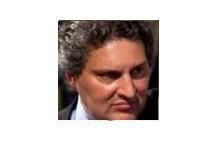
IFR Editor-at-large Keith Mullin
It promises to be a fascinating showpiece event although I suspect it will result in very little in the way of concrete actions or take-aways. A no-action outcome will be in large measure engineered by the bank’s formidable legal team fronted by two former SEC enforcement division heads: recently-hired William McLucas and general counsel Stephen Cutler. There’s no doubt that Dimon will have been expertly briefed.
Nevertheless, the hearing should see a fulsome display of Senatorial emotion ranging from the ABC of anger, bewilderment and confusion through to disgust, puzzlement and indignation. Dimon has been told he’ll be expected to give full answers as to how the trading loss – which he has advertised as US$2bn-which-could-rise-to-US$3bn but which market sources believe could reach US$5bn – could have occurred and who knew what the CIO was up to. He won’t.
Eerie silence
While Dimon was quick to correct his tempest in a teapot blunder by blaming others in a trumped-up exhibition of mock anger and righteousness, he’s been eerily silent on the internal workings of the CIO and the nature of his relationship and level of information exchange with former CIO head Ina Drew (who let’s not forget reported directly to him) and the bank’s army of risk managers.
It will be fascinating to see how he responds to the line of questioning around how what was billed as a hedging operation could have morphed into one of the biggest hedge funds in the world taking massive speculative punts in synthetic credit markets.
Or why the CIO altered its VaR metrics, who knew about it, why news of the change was omitted from the Q1 earnings statement, and whether this should have been disclosed to stakeholders, including the board and shareholders, as a material fact.
Or why the firm’s chief risk officer or chief financial officer either weren’t in the information loop or powerless to do anything about it.
Or whether Dimon thinks the Volcker Rule banning proprietary trading would have prevented the losses.
I obviously have no idea what Dimon knew or didn’t know, but it’s inconceivable to me that he wouldn’t have either sanctioned the massive increase in CIO position-taking or at least known quite a lot about it. It will also be fascinating to see his body language. The degree of vehemence in his answers and level of obfuscation in his content will be a source of enthralment. He will have been briefed on which style – contrition or arrogance – he should adopt. I’m guessing we’ll witness a demonstration of haughty obfuscation. That’s Wall Street’s way, so why change the habits of a lifetime?
The investigation into the losses is expected to focus heavily on the issue of materiality regarding the change in CIO VaR levels.
In essence, the bank was running a conceptually simple curve-flattening credit strategy but realising it in a complex way: buying protection on senior and equity pieces of the Markit CDX North America Investment Grade Series 9 index maturing December 2012, selling protection on the due December 2017 contract, and replicating the strategy using the equivalent iTraxx indices.
The investigation into the losses is expected to focus heavily on the issue of materiality regarding the change in CIO VaR levels. If materiality is proved, regulators are expected to go after senior executives of the bank, partially assuaging criticisms that those guilty of infractions have got off scot-free and that regulators are impotent in the face of the inner workings of complex financial institutions.
Lot of wood
I’ve been reading in recent weeks that neither the veritable army of regulators working on-site at JP Morgan nor the reams of trade data made available to them were sufficient to flag the unusually large trading activity, and that in effect regulators had so much data that they couldn’t see the wood for the trees.
And there was a hell of a lot of wood: JP Morgan’s net short investment-grade CDS position increased from US$10bn notional to US$84bn in the first quarter of 2012; its net short position in investment-grade CDS with a maturity of one year or less rose from US$3.6bn last September to US$54bn; its net short position with a maturity of five years-plus increased fivefold to US$102bn; its long high-yield CDS position was cut from US$54bn notional to a short position of US$4bn; net-net, the amount of CDS protection sold had more than doubled from US$65bn to US$148bn.
I think it’s nigh-on impossible for regulators to wade through masses of data and flag problems before they arise. That’s expecting too much. The onus needs to be put back on financial institutions to provide short answers to simple regulatory questions. Like: What’s the gross and net size of your trading positions? How has this changed in the past week? Set out in no more than six bullet points the major significance of the changes etc, etc.
I’m not entirely sure what the Senate hearings are intended to prove. Some have billed it as the first step in the rehabilitation of Jamie Dimon’s terribly battered reputation. I’m not so sure about that; one thing I am sure of is that it’ll be great theatre.

